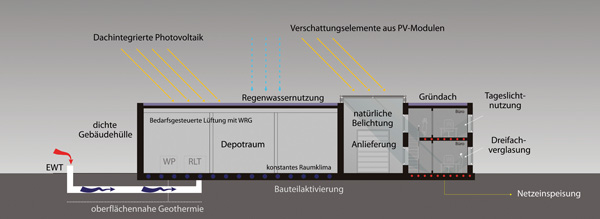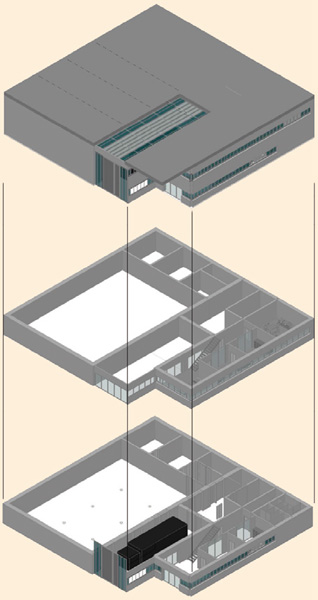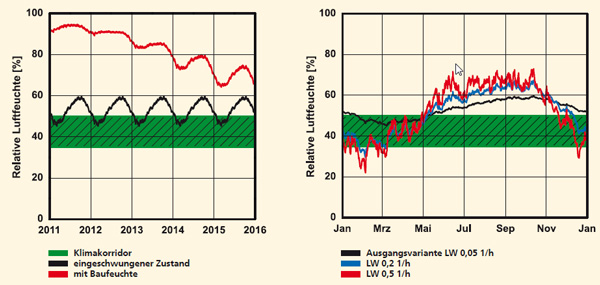Hygrothermal calculations relating to climatic influences in storage rooms



It is important to give people access to historically valuable artifacts but only a tiny proportion of a museum’s collection is actually open to visitors. The lion's share is kept in permanent storage. Collections are frequently left to municipal archives or to museums; as a result, cultural assets that ought to be stored in accordance with conservation requirements frequently end up being kept in poor storage conditions instead.
There is a shortage of storage facilities that satisfy not only the demands of conservation but also the requirements of sustainability and energy efficiency. At the same time, there is a lack of financial resources to build expensive storage facilities and install the complex, energy-intensive air-conditioning units needed to meet the necessary indoor climatic conditions. The design of a modular, energy-efficient storage facility for cultural artifacts much depends on the type of artifact to be stored. An archive storage facility, for example, needs a room temperature of 14-18 °C and a relative humidity of 35-50 %. In a storage facility for paintings, on the other hand, both the temperature and the humidity of the air in the room have to be higher, at 16-22 °C and with a relative humidity of 40-55 % respectively. Additionally, in order to preserve archive material, short-term fluctuations in relative humidity and room temperature inside the storage room must be kept to a minimum. As a rule, priority must be given to improving energy efficiency through structural and passive measures, with a view to reducing the amount of equipment needed in the building.
With this in mind, various building alternatives for the design of a storage room with optimized energy efficiency were computationally investigated. Energy requirements can be reduced by almost 30 percent by improving the insulation of exterior walls, floors and ceilings. Our calculations show that the air infiltration rate in the storage room must be kept to an absolute minimum in order to avoid the kind of large daily variations that are harmful to the artifacts being stored. They also indicated that building moisture can constitute a serious long-term problem, particularly given the room's low rate of air exchange. It is essential to ensure that building moisture cannot escape into the storage room. This applies in particular if the depot contains only small amounts of materials capable of buffering heat and moisture.